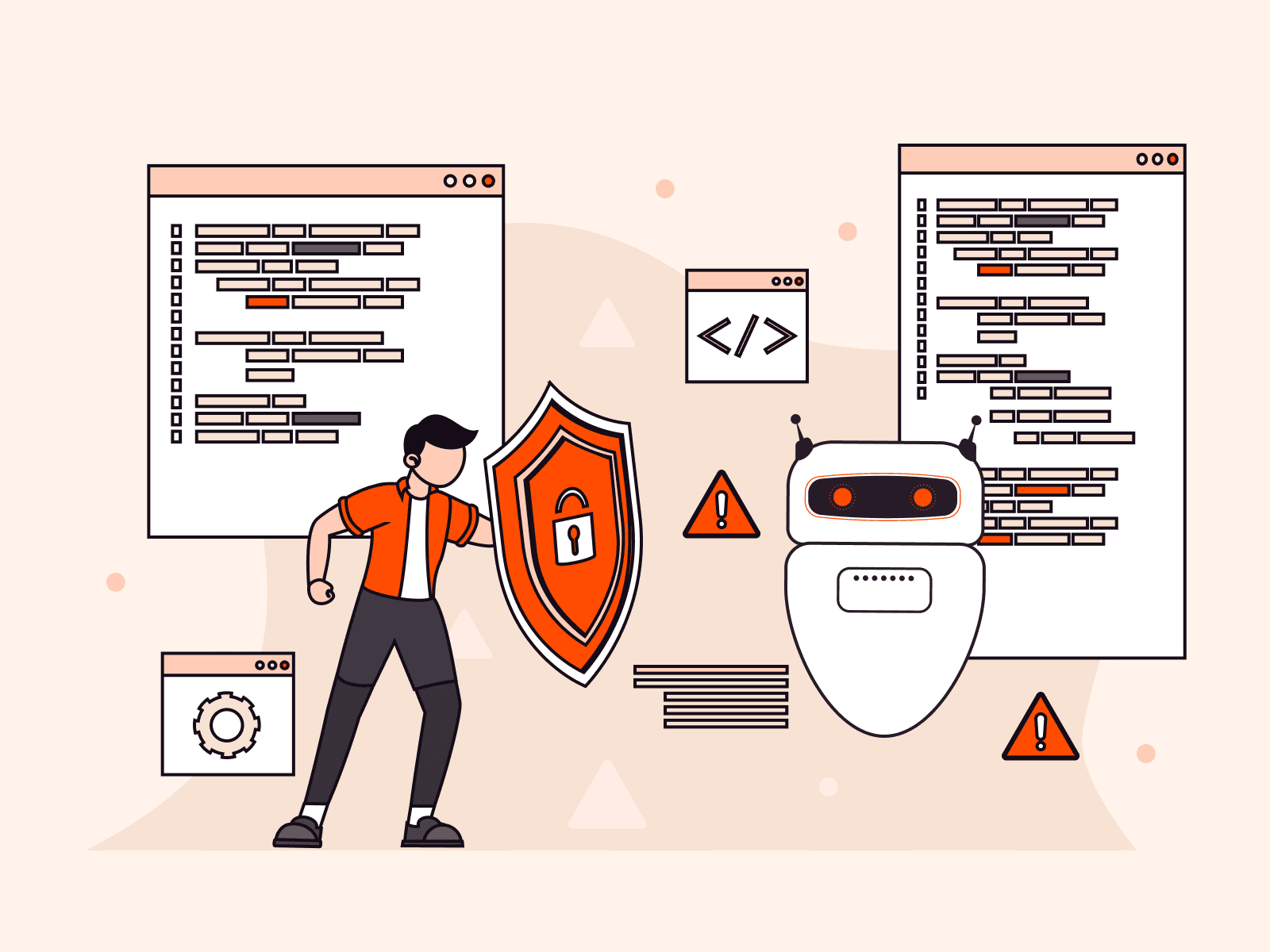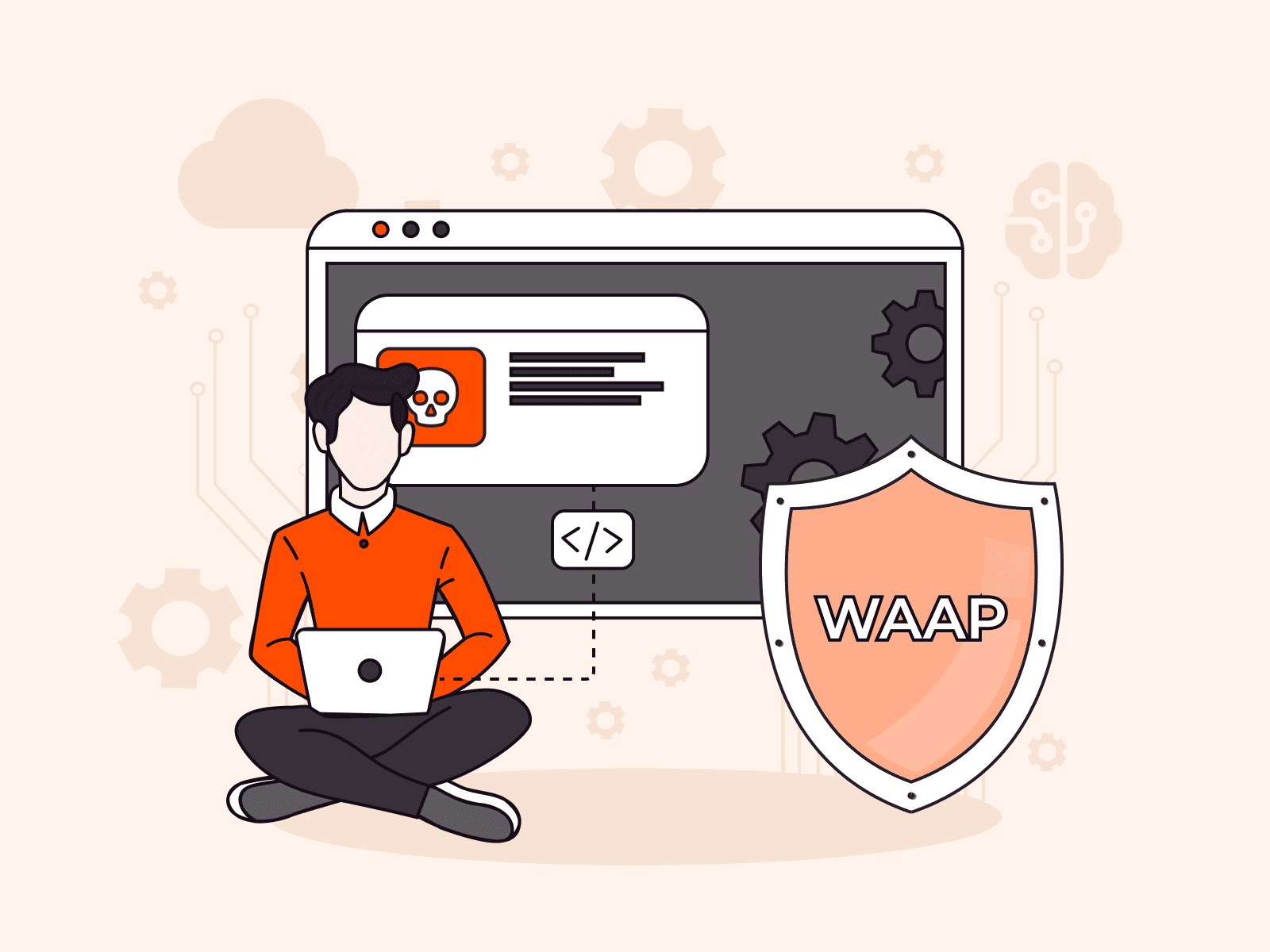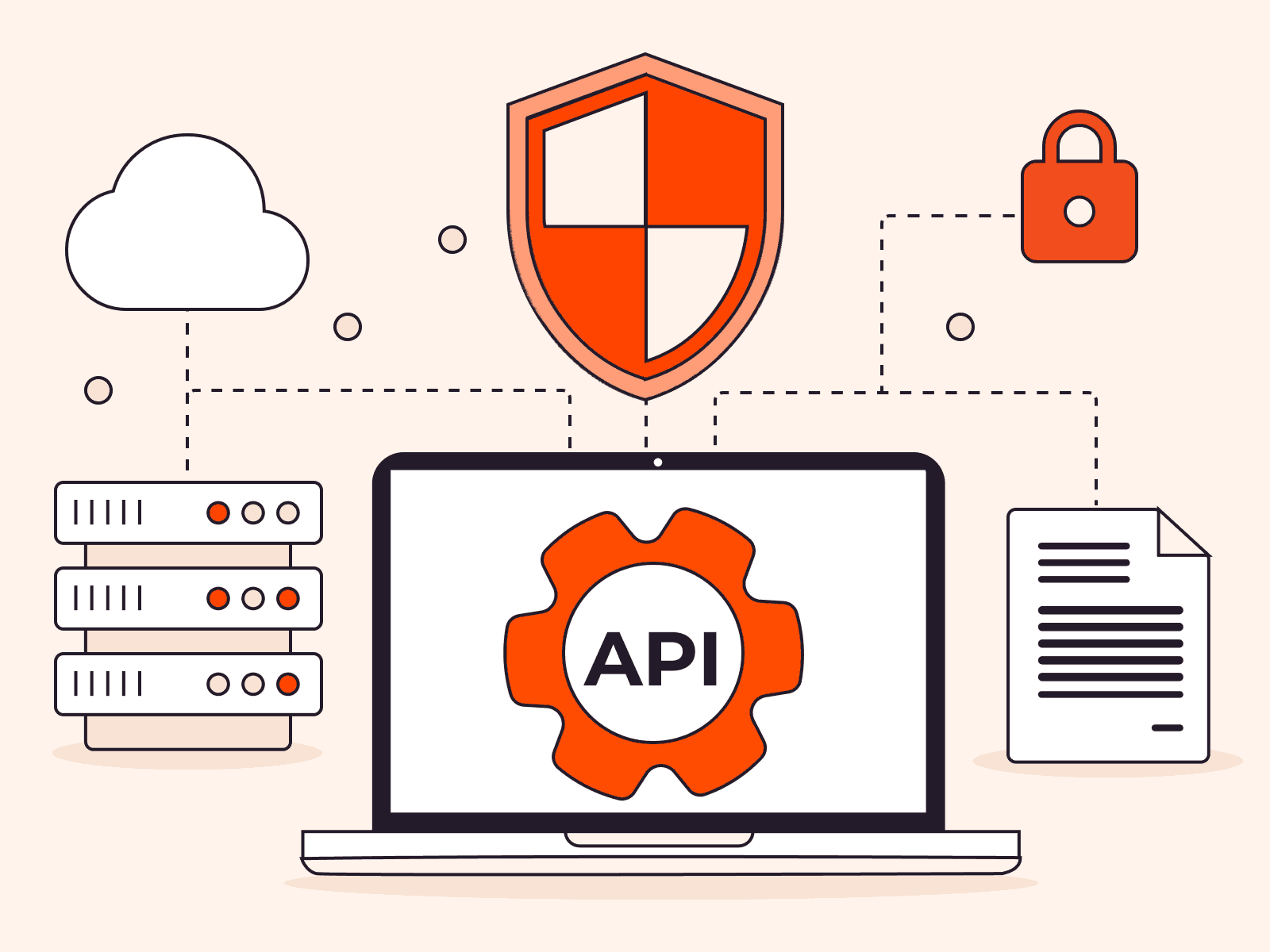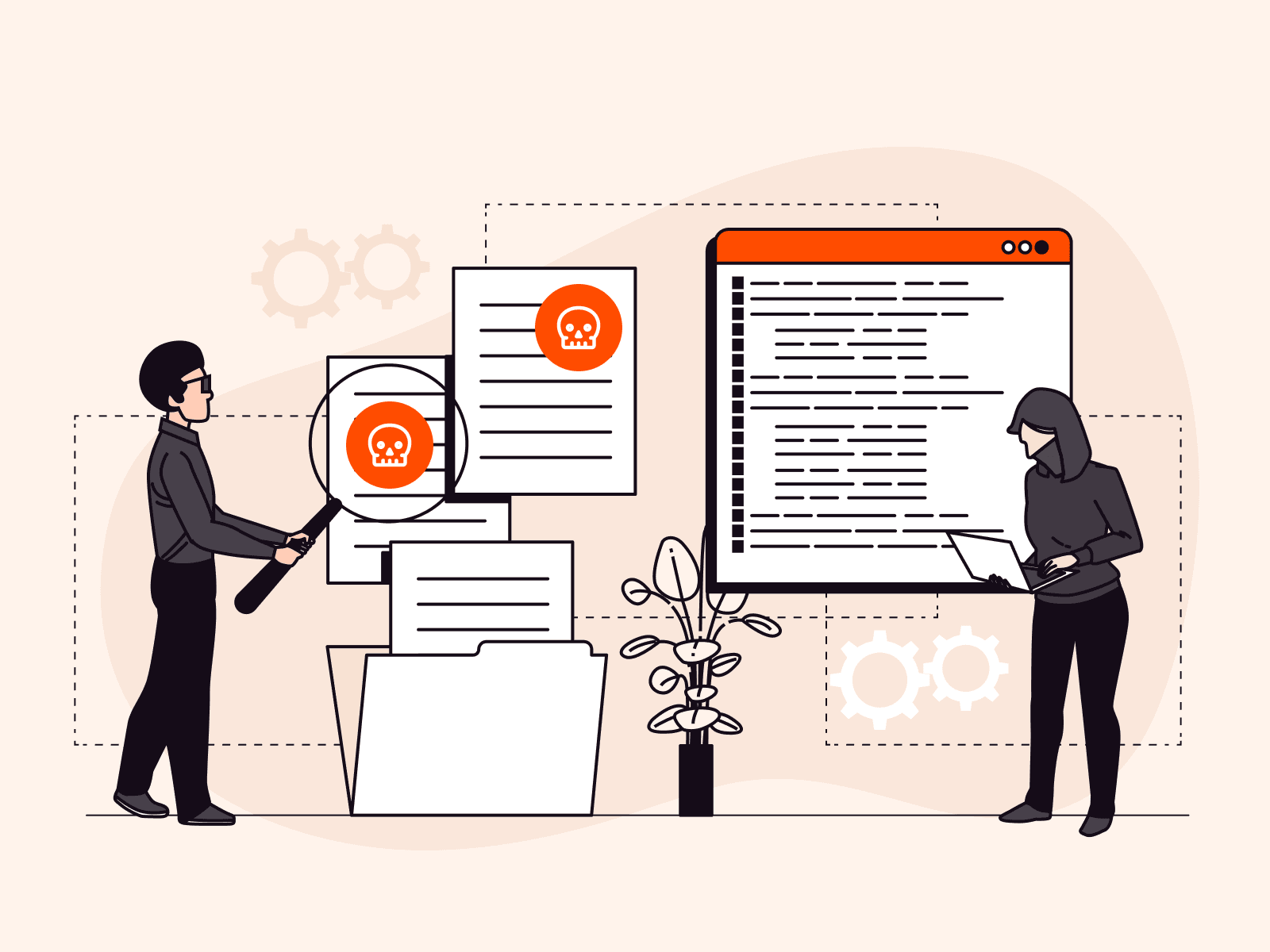How to manage good bots? Difference between good bots and bad bots
- By Gcore
- February 9, 2023
- 12 min read

A bot, short for “robot,” is a type of software program that can automatically perform tasks quickly and efficiently. These tasks can range from simple things like getting weather updates and news alerts to more complex ones like data entry and analysis. While bots can be beneficial in our daily lives, they are also associated with malicious activities we’re all too familiar with, such as DDoS attacks and credit card fraud.
In this post, we’ll dive deep into the topic and explore the difference between good bots and bad bots. You’ll learn about bot management, including best practices and available tools to identify and implement them. By the time you finish reading, you’ll have a good grasp on how to properly manage bots on your website or application—and how to keep any bad bots from getting through the door.
What is a good bot?
Good bots, also known as helpful or valuable bots, are software programs that are designed to perform specific tasks that benefit the user or the organization. They are built to improve the user experience on the internet.
For instance, good bots crawl through websites, examining the content to ensure it is safe. Search engines like Google use these crawlers to check web pages and improve search results. Also, good bots can be found performing various tasks such as gathering and organizing information, conducting analytics, sending reminders, and providing basic customer service.
Now that you’re familiar with what a good bot is, let’s take a look at some specific instances of their use “in the wild.”
The following are examples of good bots:
- Search engine crawlers. Googlebots and Bingbots are web crawlers that help the search engines Google and Bing, respectively, index and rank web pages. These types of bots comb through the entire internet to find the best content that can enhance search engine results.
- Site monitoring bot. This type of bot is used to continuously monitor a website or web application for availability, performance, and functionality. It helps detect (and alert us about) issues that could affect the user experience, such as slow page load times, broken links, or server errors. Some examples of these are Uptime Robot, StatusCake, and Pingdom.
- Social media crawlers. Social networking sites use bots like these to make better content recommendations as well as battle spam and fake accounts, all with the intent of presenting an optimal and safe online environment for the site’s users. Examples of such bots are the Facebook crawler and Pinterest crawler.
- Chatbot. Facebook’s Messenger and Google Assistant are bots that can automate repetitive tasks like responding to chat messages. They mimic human conversation by replying to specific prompts with predetermined answers. Another example, OpenAI’s ChatGPT, serves as a highly advanced chatbot, utilizing AI/ML technology to simulate human conversation and provide automated responses to individual queries. This can save time and resources for organizations of all sizes, whether it’s a big company, a small business, or even an individual user.
- Voice bot. Also referred to as voice-enabled chatbots, these run on AI-powered software that can accept voice commands and respond with voice output. They provide users with a more efficient means of communication when compared to text-based chatbots. Well-known examples of voice bots include Apple’s Siri, Amazon’s Alexa, and the above-mentioned Google Assistant.
- Aggregator bot. Like the name implies, this bot vacuums up web data, gathering information on a wide range of topics—weather updates, stock prices, news headlines, etc. It brings all of this information together and presents it in one convenient location. Google News and Feedly are examples of aggregator bots in action.
There are many other fields where good bots are in use—in fintech (making split-second decisions in the stock market), in video games (as automated players), in healthcare (assisting with research tasks and test analysis), and numerous other applications.
We’ve covered the basics of what good bots are and how they are employed for our benefit—now it’s time to start talking about the bad ones.
What is a bad bot?
Bad bots are a type of software application that is created with the intention of causing harm. They are programmed to perform automated tasks such as scraping website content, spamming, hacking, and committing fraud. Unlike good bots that assist users, bad bots have the opposite effect: spreading disinformation, crashing websites, infiltrating social media sites, using fake accounts to spam malicious content, etc.
Imagine the impact on specific individuals or organizations once bad bots target them. The result can be financial loss, reputational damage, even legal issues if sensitive information is stolen or shared—or all of the above. It can also lead to identity theft or other types of cybercrime. The consequences can be severe, and individuals and industries must take necessary precautions to protect themselves from bad bots.
Read on to familiarize yourself with instances of bad bots and how they operate.
Examples of bad bots are the following:
- Web content scraper. Initially, there are some positives in using web content scrapers (for ethical purposes), but mostly it’s being used with bad intentions. The intent is to crawl websites and collect confidential data, such as personal details and financial information, which can be used for identity theft, financial fraud and/or data breaches. For instance, a cybercriminal may target an e-commerce website with a scraper designed to extract sensitive information, resulting in financial losses for both individuals and businesses.
- Spammer bot. Bots utilized to send spam messages or post spam comments on websites and social media platforms. As per SpamLaws, spam is responsible for 14.5 billion messages globally per day, representing 45% of all emails generated—and the bots are responsible for a significant part of it.
- DDoS bot. These bots are used to launch DDoS attacks against websites by overwhelming them with traffic, making those sites unavailable to legitimate users. Cybercriminals are taking advantage of these bad bots, resulting in DDoS attacks that have become more complex than ever before.
- Click fraud bot. A bot created specifically to artificially inflate advertising platform revenue by clicking on links or ads. Bad bots generate these fake page views and clicks, distorting the real metrics of ad performance, which in turn defrauds advertisers. According to Statista, digital advertising fraud costs are predicted to rise from $35 billion to $100 billion between 2018 and 2023, potentially causing significant losses for online publishers.

- Account takeover bot. This type of bad bot attempts to gain unauthorized access to a user’s online account by automating the process of guessing or cracking login credentials. Once access is gained, the bot can carry out malicious activities, such as credit card fraud or stealing sensitive information.
Take note that malicious and harmful bots have become more advanced in recent years because of cybercriminals, making them more challenging to identify and block—the bots have evolved from basic crawlers to more sophisticated programs that mimic human behavior, using advanced techniques to avoid detection.
Let’s now proceed to highlighting some telltale signs—the indicators—that will help inform you if a particular bot is good or evil.
How do you best identify the good bots from bad bots?
We’ve discussed various ways in which bots are utilized today. The difference lies in the intention of the person who created the bot—it can be either useful or harmful. From the perspective of a business owner or a regular user, how can you distinguish between good and bad bots? Even for someone who is new to the subject, there are ways to differentiate between the two.

| Approach & methods | How it works | Good bots identification | Bad bots identification |
| User Agent Analysis | The website owner can check the user-agent strings of incoming traffic to their site. This information is stored in the HTTP header and is easily accessible for analysis. | A bot scans your website to index it for search engines. The official Google bot typically identifies itself by using its user agent ID, such as “Googlebot” or something similar, to let website owners know that it is indeed a bot from Google. The same thing applies for the Bing bot. | Regular users and good bots typically have a recognizable user agent ID, which can identify them and their purpose. On the other hand, if a bot doesn’t include a user agent ID or the ID is unknown, this could indicate that the bot is malicious and should be treated as a potential threat. |
| Behavior Analysis | This approach is used to identify the bot’s behavior or network. The program looks at the request frequency, IP address, and content of the request. | A good bot is likely to make requests at a consistent rate, with a small number of requests per minute. | A bad bot might make excessive requests, attempting to scrape data or overwhelm the website. |
| IP address Analysis | A method used to identify the source of incoming traffic on a website or network. Checking the IP address can determine if it belongs to a credible source or not. | Good bots often use static IP addresses, meaning that the same IP address is used consistently for all requests. There’s a known list of IP addresses of confirmed good bots to check and compare. | Bad bots often use dynamic IP addresses, which change frequently, making it more difficult to identify and track their activity. |
| CAPTCHA Challenge | CAPTCHA is a technique used to distinguish between good and bad bots by presenting a challenge to the user. The most common type of challenge is a distorted text or image that must be solved before accessing a website. Moreover, Google’s reCAPTCHA can be used for free to protect websites from spam and abuse. Unlike traditional CAPTCHAs, reCAPTCHA employs advanced algorithms and machine learning models to analyze user behavior. | Good bots, such as search engine crawlers, are designed to mimic human behavior and solve simple CAPTCHA challenges. With the help of Google’s reCAPTCHA It identifies good bots by analyzing the IP address reputation, browser behavior, device information and cookie usage. | Google’s reCAPTCHA can identify and block malicious bots. It uses various signals to determine if a request is made by a human or a bot, such as the IP address, browser type, and other characteristics. If the system suspects that a request comes from a bad bot, it may ask the user to complete a challenging and complex task or puzzle. |
What is bot management and how does it work?
Bot management is necessary for identifying, monitoring, and tracking the behavior of bots on a website or network. It aims to manage good bots, which are beneficial to the website or network, while protecting against bad bots, which can cause harm. The goal is to take advantage of the good bots and eliminate the negative impact of the malicious ones.
For a business/website owner, bot management is of utmost importance, as it plays a vital role in protecting your online assets and maintaining the integrity of your website. Here are a few key reasons why bot management should be on your radar:
- Protects against spam and fraud. Bot management can help identify and prevent spam and fraudulent activities on your website. This not only protects your business and its reputation, but it also helps ensure the safety of your customers.
- Maintains website performance. Bots in general can consume a significant amount of your website’s resources, slowing down the performance and affecting the user experience. Properly managing bots helps to regulate and control the bot traffic, reduce the load on your servers and maintain the website and SEO performance.
- Ensures fair competition. Managing bots also helps prevent the use of bad bots from unethical scraping of a website’s content, ensuring a fair and level playing field for all businesses. For instance, web scraping can be used by your competitor to research and analyze your website—for example, to find out what your best product offerings, features, categories, and bundle deals are. Competitors can also use illegal scraping of SEO strategies, social media presence, and consumer feedback through comments, posts and reviews.
- Protects against legal liabilities. Managing bots protects you against legal liabilities and strengthens user privacy. A bot management system could help an organization comply with, for example, the European Union’s General Data Protection Regulation (GDPR). The protocol requires companies to protect the personal data of EU citizens, making sure that the data is processed in a transparent and secure manner.
- Compliance with regulations. Certain industries and sectors are subject to regulations that require them to protect user data and prevent malicious activity. Managing bots can help organizations and website owners to comply with these regulations and avoid costly fines.
- Protects online advertising revenue. Malicious bots can compromise online advertising systems, leading to lost revenue for publishers and advertisers. You can prevent this by blocking harmful bots from accessing advertising networks.
- Preserves the integrity of online data and analytics. Bot management helps to prevent bots from skewing website analytics and distorting the data that businesses rely on to make informed decisions.
In bot management, the process typically involves several technical components. Let’s take a look at how this system works and see some examples.
| Component | Description | Example |
| Bot Detection | This is the first step in the bot management process. It involves identifying bots that are accessing your website or application. It can be done by different approaches such as user-agent analysis, IP address analysis and behavioral analysis. | A website admin uses IP address analysis as an approach to determine if the incoming request is from a known good bot, such as Googlebot, or a known bad bot, such as botnet. |
| Bot Classification | Once bots have been detected, the next step is to classify them into good bots and bad bots. This is done based on the information gathered during bot detection. | After classifying if it’s a good bot—let’s say it’s a search engine crawler—the website admin then lets these bots crawl through the website. If it’s a bad bot, the admin blocks traffic from it. |
| Bot Filtering | This is the process of blocking or limiting the access of bad bots to your website or application. This can be done using various methods, such as rate limiting, IP blocking, and CAPTCHA challenges. | For example, the website admin can use rate limiting, which involves setting a maximum number of requests that a bot can make to your website or application within a given time period. |
| Bot Monitoring | Bot monitoring is the process of keeping track of a bot’s activities such as automated programs that perform various tasks online. This is important because bots can be used for both good and bad purposes. Without proper monitoring, they can cause security risks, harm businesses, or negatively impact consumers. | An ecommerce website’s administrator can utilize bot monitoring to track the quantity of requests made by each bot to the site and compare it to their past data. This helps identify any abrupt increases in activity that might suggest malicious behavior. If the monitoring system detects any harmful bots, it may automatically block them or notify the administrator for closer examination. |
| Bot Reporting | A process of generating reports on bot activity. These reports include the number of bots detected, the types of bots, and the actions taken to manage the bots. They can be used to track the effectiveness of your bot management system and make informed decisions about future bot management strategies. | For instance, using bot reporting like log analysis, dashboards and alerts. These practices can generate daily or weekly reports on the activity of bots on the website, including the number of bots detected, the types of bots detected, and the actions taken to manage the bots. |
These are a few examples of some of the technical components in bot management. Apart from the ones mentioned above, there are some specific components and tools used depending on the unique needs and requirements of your website and application. This may include bot management solutions that are a paid service and can be purchased online.
Within the market, there are complex, third party solutions designed to protect websites and apps from malicious bots. They’re designed to detect bots, distinguish between good and bad ones, block malicious activities, gather logs, and continuously evolve to stay ahead of the rising threat of bad bots. These solutions make it easier for website/app owners, as the owners don’t need to build their own protection—simply activate a third-party service and enjoy the protection it provides. One such service is Gcore Protection, and we will discuss how it works and helps fight against bad bots.
How does Gcore protection work against bad bots?
Gcore offers a comprehensive web security solution that includes robust bot protection. We understand the growing concern surrounding bad bots and our solution tackles this challenge through a three-level approach.
- DDoS Protection. Our first level offers protection against common L3/L4 volumetric attacks, which are often used in DDoS attacks. This reduces the risk of service outages and prevents website performance degradation.

Discover more details about Gcore’s DDoS protection. - Web Application Firewall. Our WAF employs a combination of real-time monitoring and advanced machine learning techniques to protect user information and prevent the loss of valuable digital assets. The DDoS protection system at Gcore functions by continuously evaluating incoming traffic in real-time, checking it against set rules, calculating request features based on assigned weights, and blocking requests that exceed the defined threshold score.

- Bot Protection. By using Gcore’s Bot Protection, you can safeguard your online services from overloading and ensure a seamless business workflow. This level of protection utilizes a set of algorithms designed to remove any unwanted traffic that has already entered the perimeter. As a result, it mitigates website fraud attacks, eliminates request form spamming, and prevents brute-force attacks.

Our bot protection guarantees defense against these malicious bot activities:
- Web content scraping
- Account takeover
- Form submission abuse
- API data scraping
- TLS session attacks
At Gcore, our users enjoy complete protection from both typical invasive approaches, such as botnet attacks, as well as those that can be disguised or mixed in with legitimate traffic from real users or good bots like search engine crawlers. This, combined with the ability to integrate with a WAF, empowers our clients to effectively manage the impact of attacks across the network, transport, and application layer. Here are the key benefits and security features you can expect with Gcore’s all in one web security against DDoS attacks (L3, L4, L7), hacking threats and malicious bot activities.
| Key benefits | Security features |
| Maintain uninterrupted service during intense attacks | Global traffic filtering with a widespread network |
| Focus on running your business instead of fortifying web security | DDoS attack resistance with growing network capacity |
| Secure your application against various attack types while preserving performance | Early detection of low-rate attacks and precise threat detection with low false positive rate |
| Cut costs by eliminating the need for expensive web filtering and network hardware | Session blocking for enhanced security |
In addition to this, our multilevel security system keeps a close eye on all incoming requests. If it sees that a lot of requests are coming from the same IP address for a specific URL, it will flag it and block the session. Our system is smart enough to know what’s normal and what’s not. It can detect any excessive requests and respond automatically. This helps us ensure that only legitimate traffic is allowed to pass through to your website, while blocking any volumetric attacks that may come your way.
Conclusion
Bot management is crucial when it comes to websites and applications. As we discussed in this article, there are two types of bots—good bots and bad bots. Good bots bring in valuable traffic, while bad bots can cause harm and create security threats. That’s why it’s important to have proper bot management in place. By managing the different bots that access your website or application, you can keep your business safe from spam and fraud, protect your customers’ privacy and security, and make sure everyone has a good experience on your website. And by being proactive about bot management, you’ll be taking steps to keep your online presence secure and trustworthy.
Alongside utilizing the bot management strategies we’ve outlined today, Gcore adds an additional layer by offering comprehensive protection against bad bots and other types of attacks, allowing website owners to effectively manage the impact of attacks and ensure the smooth operation of their website or application. This allows businesses and individuals running websites to confidently protect their online assets and ensure their networks are secure.
Keep your website or application secure from malicious bots with Gcore’s web application security solutions. Utilizing advanced technology and staying up-to-date with the latest threats, Gcore offers peace of mind for businesses seeking top-notch security. Connect with our experts to learn more.
Related articles
Subscribe to our newsletter
Get the latest industry trends, exclusive insights, and Gcore updates delivered straight to your inbox.





